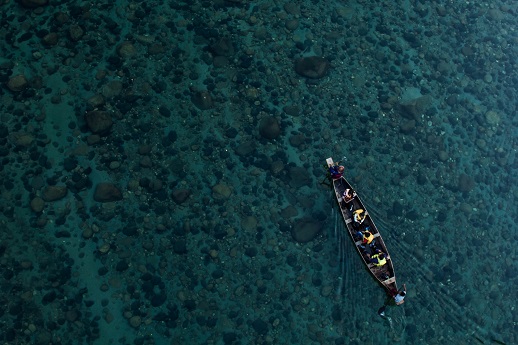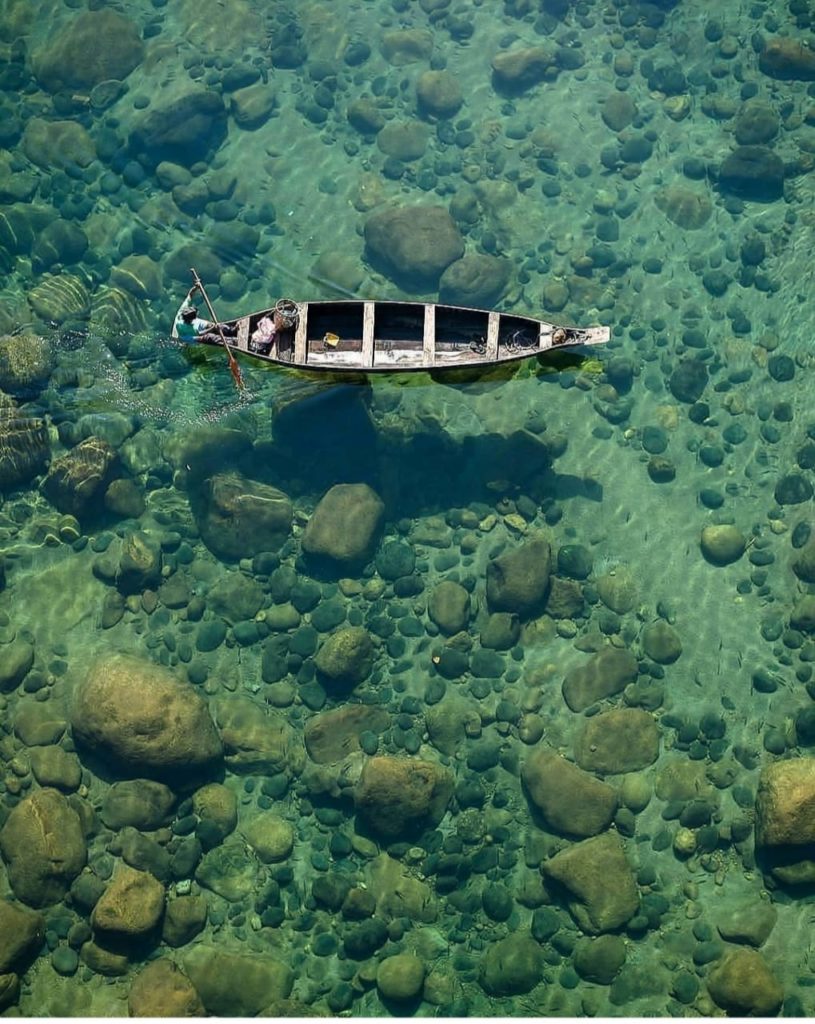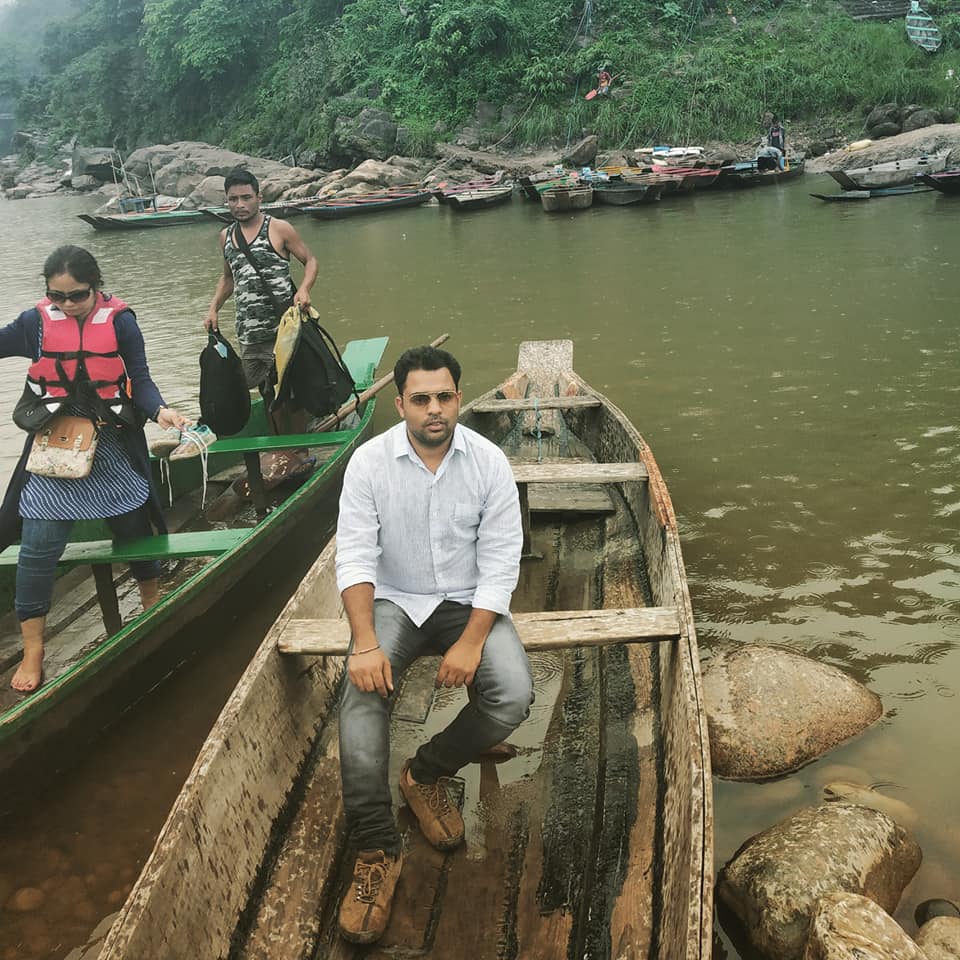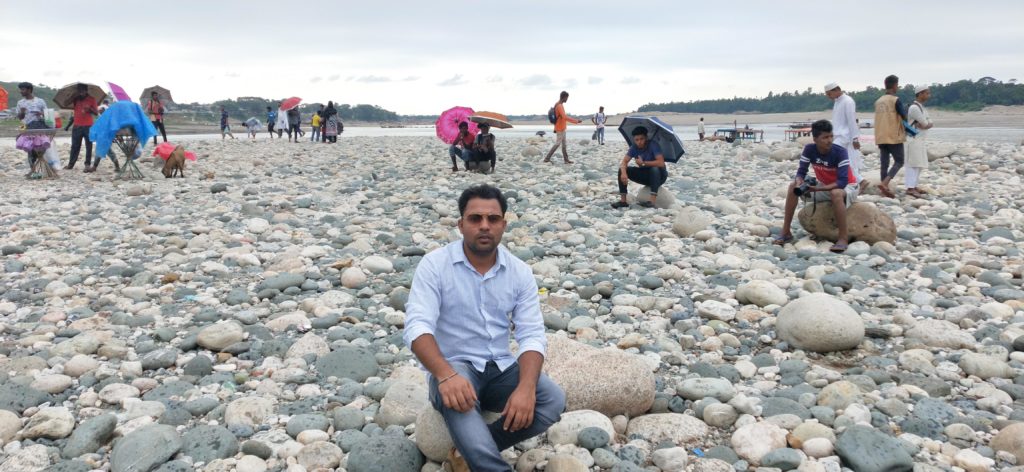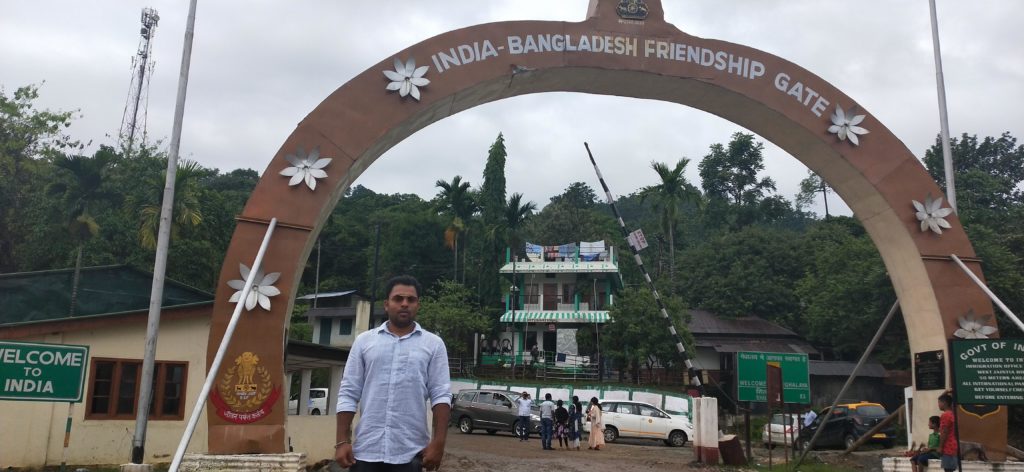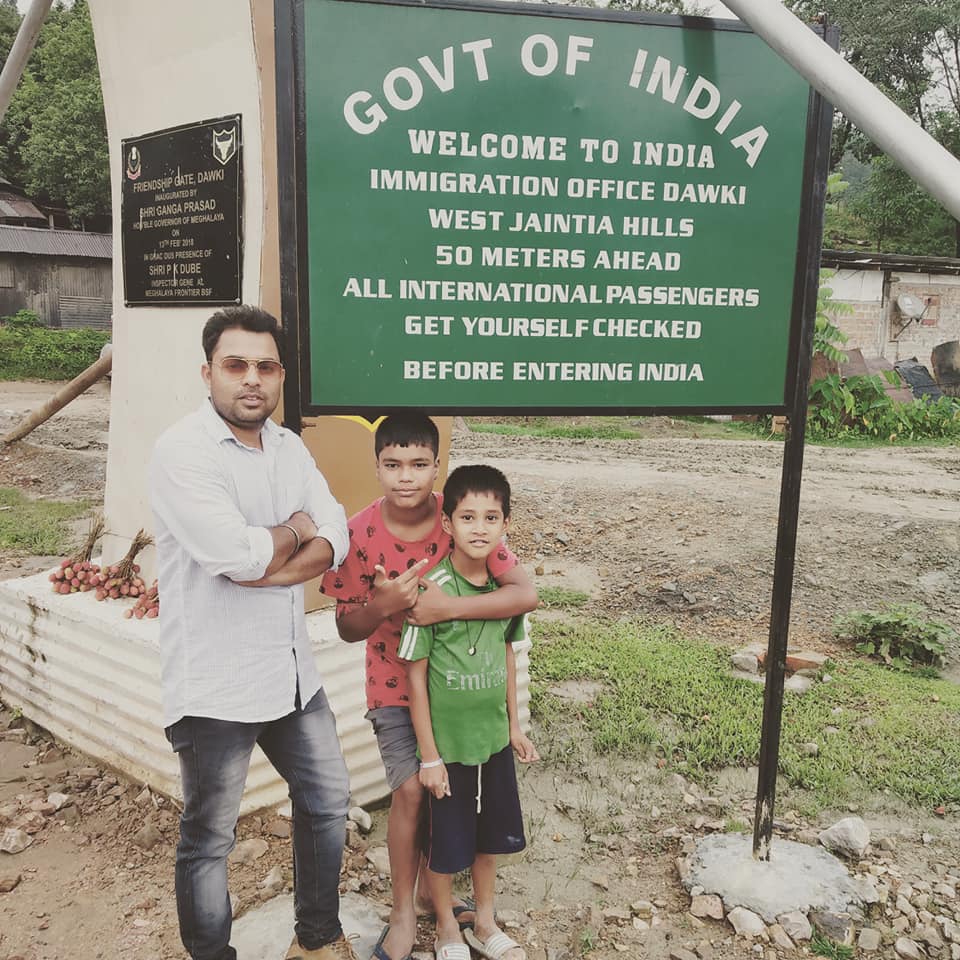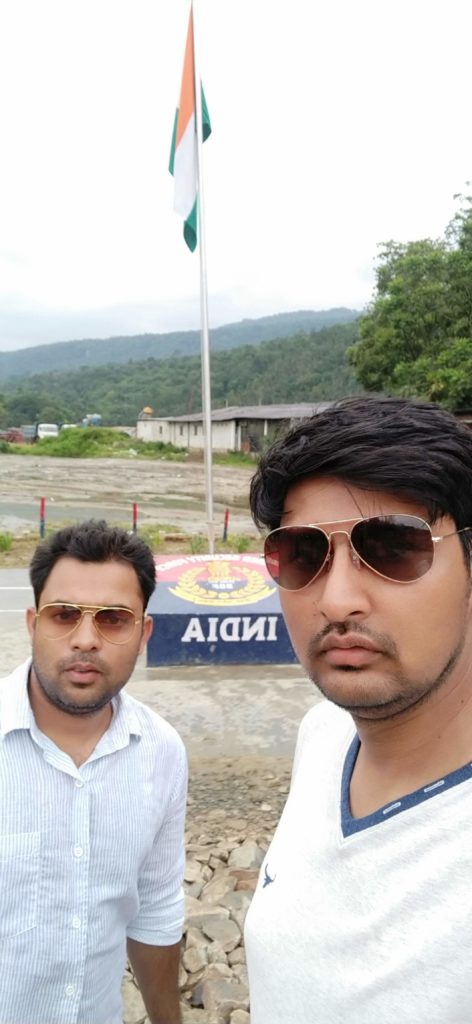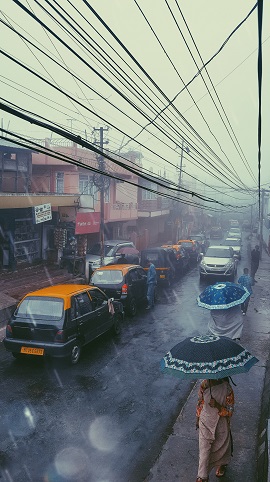Meghalaya sprung up yet another suprise in the form of umngot river (also known as Dawki river). Dawki village in Meghalaya, is the last Indian village on the border between our country and Bangladesh. This is the main international route for major export of coal, limestones, food grains etc to Bangladesh.
The gorges on our way was pristine and green. But the total journey was through hilly road with sharp bends.After spending a day over in Mawlyyong I along with my friend Vivek Mittal started our journey for Dwaki.
It would not be too much of an exaggeration to say that drive through the complete route was an unforgettable experience.En route we saw long lines of parked tricks fully loaded with stone blocks used for construction . Apparently these building stone blocks are exported to Bangladesh.
It was said that almost 800 – 1000 trucks cross the border EVERY day.
Our first glimpse of Umngot river was near the dawki Bridge . That age old ‘Hanging Bridge’ on the river was constructed by the British way back in 1932 is another point of attraction of Dawki .
Dark green greenish hues of Umngot flowed between the hills on both sides.Dark green in the center faded towards the edges as the depth become less. The small boat in the river added gems to it .
Zooming into the bank of rivers,the water was pretty transparent with light shades of green Fishing boat were lined up and tied at corner to prevent it from floating away.
There was a steep walking trail with broken stairs to reach the boating point from the main road. There were no sign boards for the boat ride charge and was completely managed by locals present there .There was just a big rock with a black mark painted on it to depict the border, we also walked into the other side after getting down from our boat and feasted on Jhal-Muri
Border between India and Bangladesh is not clearly marked and describable to tourists. Locals and Bangladeshi know it and one sees crowds of curious Bangladeshi beyond an invisible line. Since there was no physical barricades or fence, we walked beyond the border just then called back by the BSF officials who were closely watching the movements from the watch tower.
With people from both the sides looking at each other . Not many options to eat. You may find some food on the other side of the border though. They accept Indian currency and will pass on the food from the other side.Even we had chal muri and pineapples from Bangladesh side.
Later we moved to Friendship Gate of India and Bangladesh border.Our cab driver told us about this border and took us there.This is international border between India and Bangladesh, very close to river Dawki. We club the visit to this place alongwith visit to river dawki
We travelled upto the market at the boarder check post ( people from both sides of the boarder are allowed in this market).We just to made a selfie with the signage.
In a world divided – the option of walking across one border and being close enough to touching the other border was just mesmerizing. It’s crowded though since there were trucks going across the border all the time – but the border officials were nice to tourists who want to take a snap of the moment. There are a lot of photo op moments and it’s something one should really do.
We visited this border between India and Bangladesh, out of curiosity to see an international border.
We saw two entrance gates/arches one on the Indian side — Dawki, and on the Bangladesh side, the place being called Tamabil. The people on both sides were friendly and tourists like us could simply walk across the gates and chat with Bangladesh soldiers. We could even take photos with them.
After spending some time in over there we started our journey back to Shillong.



